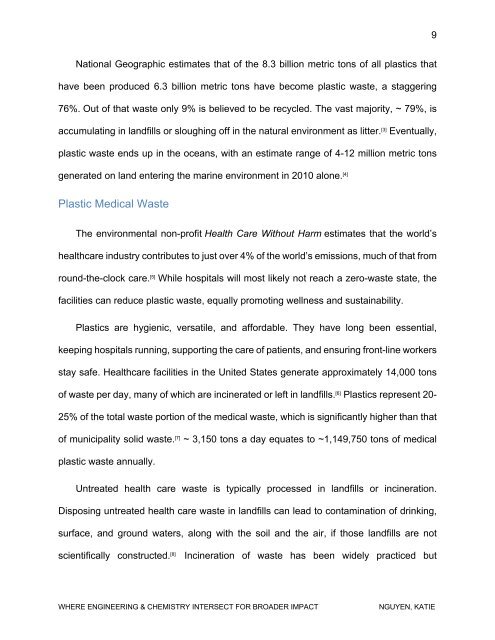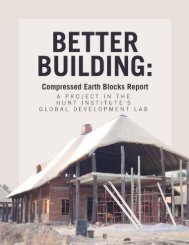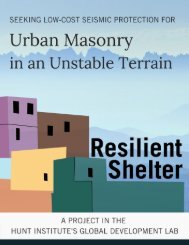Where Engineering & Chemistry Intersect for Broader Impact
Currently, many biodegradable products in the market are bio-based, such as polysaccharides, proteins, and lipids, and are focused on conventional plastic applications. This approach to production of biodegradable plastics, however, is facing mounting challenges due to high cost, weaker performance, and environmental issues. In addition, several biodegradable plastics have proven to break down quickly under specific, simulated environmental conditions, but they may not be effectively degradable under natural conditions. As a result of these challenges and many more, there exists a gap in the market. Our Project Affiliates, Dr. Son and Dr. Krueger, aim to bridge this gap by pursuing a biodegradable plastic that better addresses the aforementioned challenges, investigating a prototype plastic with predictable degradation and mechanical properties. In the spirit of interdisciplinary innovation, they seek to develop a joint chemical and engineering approach to biodegradable plastics for broader impact.
Currently, many biodegradable products in the market are bio-based, such as polysaccharides, proteins, and lipids, and are focused on conventional plastic applications. This approach to production of biodegradable plastics, however, is facing mounting challenges due to high cost, weaker performance, and environmental issues. In addition, several biodegradable plastics have proven to break down quickly under specific, simulated environmental conditions, but they may not be effectively degradable under natural conditions. As a result of these challenges and many more, there exists a gap in the market.
Our Project Affiliates, Dr. Son and Dr. Krueger, aim to bridge this gap by pursuing a biodegradable plastic that better addresses the aforementioned challenges, investigating a prototype plastic with predictable degradation and mechanical properties. In the spirit of interdisciplinary innovation, they seek to develop a joint chemical and engineering approach to biodegradable plastics for broader impact.
You also want an ePaper? Increase the reach of your titles
YUMPU automatically turns print PDFs into web optimized ePapers that Google loves.
9<br />
National Geographic estimates that of the 8.3 billion metric tons of all plastics that<br />
have been produced 6.3 billion metric tons have become plastic waste, a staggering<br />
76%. Out of that waste only 9% is believed to be recycled. The vast majority, ~ 79%, is<br />
accumulating in landfills or sloughing off in the natural environment as litter. [3] Eventually,<br />
plastic waste ends up in the oceans, with an estimate range of 4-12 million metric tons<br />
generated on land entering the marine environment in 2010 alone. [4]<br />
Plastic Medical Waste<br />
The environmental non-profit Health Care Without Harm estimates that the world’s<br />
healthcare industry contributes to just over 4% of the world’s emissions, much of that from<br />
round-the-clock care. [5] While hospitals will most likely not reach a zero-waste state, the<br />
facilities can reduce plastic waste, equally promoting wellness and sustainability.<br />
Plastics are hygienic, versatile, and af<strong>for</strong>dable. They have long been essential,<br />
keeping hospitals running, supporting the care of patients, and ensuring front-line workers<br />
stay safe. Healthcare facilities in the United States generate approximately 14,000 tons<br />
of waste per day, many of which are incinerated or left in landfills. [6] Plastics represent 20-<br />
25% of the total waste portion of the medical waste, which is significantly higher than that<br />
of municipality solid waste. [7] ~ 3,150 tons a day equates to ~1,149,750 tons of medical<br />
plastic waste annually.<br />
Untreated health care waste is typically processed in landfills or incineration.<br />
Disposing untreated health care waste in landfills can lead to contamination of drinking,<br />
surface, and ground waters, along with the soil and the air, if those landfills are not<br />
scientifically constructed. [8]<br />
Incineration of waste has been widely practiced but<br />
WHERE ENGINEERING & CHEMISTRY INTERSECT FOR BROADER IMPACT<br />
NGUYEN, KATIE














